|
Books Should Be Free Loyal Books Free Public Domain Audiobooks & eBook Downloads |
|
|
Books Should Be Free Loyal Books Free Public Domain Audiobooks & eBook Downloads |
|
Nature Books |
|---|
|
Book type:
Sort by:
View by:
|
By: Reuben Gold Thwaites (1853-1913) | |
|---|---|
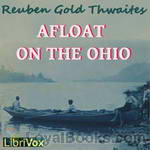 Afloat on the Ohio
Afloat on the Ohio
Afloat on the Ohio, An Historical Pilgrimage, of a Thousand Miles in a Skiff, From Redstone to Cairo.There were four of us pilgrims—my Wife, our Boy of ten and a half years, the Doctor, and I. My object in going—the others went for the outing—was to gather "local color" for work in Western history. The Ohio River was an important factor in the development of the West. I wished to know the great waterway intimately in its various phases,—to see with my own eyes what the borderers saw; in imagination, to redress the pioneer stage, and repeople it. ( From the Preface ) | |
By: Richard Jefferies (1848-1887) | |
|---|---|
 Nature Near London
Nature Near London
| |
By: Richard Mayde | |
|---|---|
 Frozen North
Frozen North
It is in this world that Mayde has created his fascinating The Frozen North: "Great as are the barren grounds, or tundri, as they are called in Siberia, the arctic forest region is far greater, for it reaches around the globe in a broad belt, nearly a thousand miles in width. Few indeed are the occupants of these great tracts, compared with the more favored southern lands. The poverty of the soil, and the severity of the climate, prevent the growth of crops, and man is offered only such subsistence as can be gained by hunting and fishing... | |
By: Richard Mead (1673-1754) | |
|---|---|
 Short Discourse Concerning Pestilential Contagion, and the Methods to Be Used to Prevent It
Short Discourse Concerning Pestilential Contagion, and the Methods to Be Used to Prevent It
This is a work written about the plague in France and how to prevent its spread. It is considered an important historical work for the understanding of transmittable diseases. - Summary by afutterer | |
By: Robert Michael Ballantyne (1825-1894) | |
|---|---|
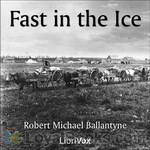 Fast in the Ice
Fast in the Ice
At the age of 16 Ballantyne went to Canada and was six years in the service of the Hudson’s Bay Company. His rule in writing, being in every case, was to write as far as possible from personal knowledge of the scenes he described. In this book he details the lives of the crew as they must overwinter in the frozen north including their meetings with Eskimos and bears and their struggles with disease. This is a realistic account of what life was like for the explorers of the Arctic. | |
By: Robert N Bader | |
|---|---|
 Amphibians and Reptiles in Captivity
Amphibians and Reptiles in Captivity
In recent years the number of people interested in keeping amphibians and reptiles in captivity has grown rapidly. All too often, these same people have little knowledge of the proper care needed for their captives, nor do they know where to turn in order to learn the needs of their animals. It is the intent of the authors of this special issue to offer the proper information needed to successfully keep amphibians and reptiles in captivity. We are by no means THE experts on the subject, nor do we claim to cover all the facts. However, we do hope that enough information is furnished to answer most of the common questions asked by people. - Summary by Tom R. Johnson | |
By: Robert O. Fielding | |
|---|---|
 Spices, their histories
Spices, their histories
A surprisingly complete and informative 64-page booklet describing common spices used in cooking and for other purposes. Written especially for grocers, but helpful for all interested. - Summary by KevinS | |
By: Robert Sterling Yard (1861-1945) | |
|---|---|
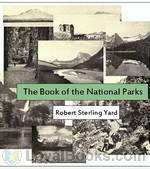 The Book of the National Parks
The Book of the National Parks
Robert Sterling Yard (February 1, 1861 – May 17, 1945) was an American writer, journalist, and wilderness activist. Born in Haverstraw, New York, Yard graduated from Princeton University and spent the first twenty years of his career in the editing and publishing business. In 1915, he was recruited by his friend Stephen Mather to help publicize the need for an independent national park agency. Their numerous publications were part of a movement that resulted in legislative support for a National Park Service (NPS) in 1916... | |
By: Robert W. Service (1874-1958) | |
|---|---|
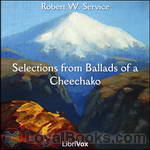 Selections from Ballads of a Cheechako
Selections from Ballads of a Cheechako
These twelve poems are from Ballads of a Cheechako which was Robert W. Service’s third book of Yukon poems, published in 1909. The word Cheechako, from Chinook Jargon, originated in the United States (Alaska) and Canada (Yukon) and was imported into local English during the Yukon gold rush that began in 1896. Cheechako, is a non derogatory word meaning “newcomer” or “tenderfoot.” The derivation looks something like this: chee new cha come ko home. | |
 Ottawa Folk Festival Robert Service Collection
Ottawa Folk Festival Robert Service Collection
The Spell of the Yukon by Robert Service with patrons, musicians and organizers. Robert Service is an iconic Canadian poet. | |
By: Rupert Brooke | |
|---|---|
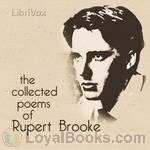 Collected Poems of Rupert Brooke
Collected Poems of Rupert Brooke
Rupert Chawner Brooke (August 3, 1887 – April 23, 1915) was an English poet known for his idealistic War Sonnets written during the First World War (especially The Soldier), as well as for his poetry written outside of war, especially The Old Vicarage, Grantchester and The Great Lover. He was also known for his boyish good looks, which prompted the Irish poet William Butler Yeats to describe him as “the handsomest young man in England”. | |
By: S. Louise Patteson (1853-1922) | |
|---|---|
 How To Have Bird Neighbors
How To Have Bird Neighbors
The author provides the listener with anecdotes from her life of her experiences with birds. She describes their habits and antics, their food favorites, their preferred nesting practices, and what can be done to encourage birds to become "neighbors". She also provides instructions on making a birdhouse. | |
By: Sidney Licht (1907-1979) | |
|---|---|
 Music in Medicine
Music in Medicine
In spite of a spirited rebirth of the movement towards the establishment of a system of healing based on music, there are many valuable uses of music in medicine which might suffer a like fate unless a critical analysis of the worth of music as a therapeutic agent is effected before Musical Therapy reaches the dubious distinction of classification as a healing cult. This book has been written with a view to preserving for medicine that which is good for patients, and in an attempt to aid musicians under medical guidance in using music to help the sick. | |
By: Sir Francis Galton (1822-1911) | |
|---|---|
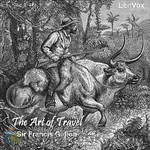 The Art of Travel
The Art of Travel
The Art of Travel is a handbook of practical advice for the adventure seeking Victorian. We hear how to organize all steps of a voyage, from the very beginnings (qualifications of a traveller, how to organize an expedition, the perfect outfit), to the actual trip (how to choose a bivouac, huts and tents, what game to shoot - and how, dealing with (hostile) savages), until the final, hopefully successful, return of the traveller (arranging memoranda). | |
By: Sir Hugh Fraser (1903-1966) | |
|---|---|
 Amid the High Hills
Amid the High Hills
A regular contributor to magazines and periodicals on outdoor pursuits, in this work, Fraser discusses salmon fishing, deer stalking, fauna in the forest, high hills and more. - Summary by Lynne Thompson | |
By: Stephen Smith (1823-1922) | |
|---|---|
 City That Was
City That Was
This 1911 history of the public health revolution that transformed New York City in the nineteenth century is also about every city and town of the world and the sanitary challenges that each encountered. Stephen Smith was an American surgeon and a pioneer in public health. “The story of a great life-saving social revolution, the mightiest in the nineteenth century and one of the most momentous in the history of civilization, is told here for the first time. It is told from the standpoint of the transformation of the City of New York, by a chief actor in the event.” Chapter four, New York The Unclean, is the heart of this work. | |
By: Steve Solomon | |
|---|---|
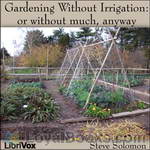 Gardening Without Irrigation: or without much, anyway
Gardening Without Irrigation: or without much, anyway
Gardening expert Steve Solomon has written extensively on gardening techniques for the home gardener. Water conservation is the focus of this work, along with more information on how to have the healthiest plants in your garden through “fertigation”, appropriate plant rotation, and soil preparation. | |
 Organic Gardener's Composting
Organic Gardener's Composting
The art and science of composting is presented in a humorous and readable manner from the basic elements to the in-depth science. An entire chapter is devoted to composting with red worms (vermiculture), and detailed information is provided on building different types of composting units. The history of the organic gardening movement is included as well as an annotated bibliography of works on the subjects of composting and food gardening. | |
By: Stewart Edward White (1873-1946) | |
|---|---|
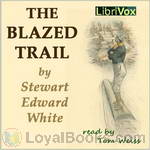 The Blazed Trail
The Blazed Trail
Stewart Edward White wrote fiction and non-fiction about adventure and travel, with an emphasis on natural history and outdoor living. White's books were popular at a time when America was losing its vanishing wilderness and many are based on his experiences in mining and lumber camps. The Blazed Trail is the story of early lumbermen in the northern woods of Michigan. The novel portrays the challenges faced by the workers focusing on one, Harry Thorpe, as he endeavors to be successful though completely unskilled when he enters the woods... | |
By: Susanna Moodie (1803-1885) | |
|---|---|
 Roughing It in the Bush
Roughing It in the Bush
'Roughing It In the Bush' is Susanna Moodie's account of how she coped with the harshness of life in the woods of Upper Canada, as an Englishwoman homesteading abroad. Her narrative was constructed partly as a response to the glowing falsehoods European land-agents were circulating about life in the New World. Her chronicle is frank and humorous, and was a popular sensation at the time of its publication in 1852. | |
By: Theodore Roosevelt | |
|---|---|
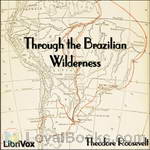 Through the Brazilian Wilderness
Through the Brazilian Wilderness
Roosevelt’s popular book Through the Brazilian Wilderness describes his expedition into the Brazilian jungle in 1913 as a member of the Roosevelt-Rondon Scientific Expedition co-named after its leader, Brazilian explorer Cândido Rondon. The book describes all of the scientific discovery, scenic tropical vistas and exotic flora, fauna and wild life experienced on the expedition. One goal of the expedition was to find the headwaters of the Rio da Duvida, the River of Doubt, and trace it north to the Madeira and thence to the Amazon River... | |
 Good Hunting: In Pursuit of Big Game in the West
Good Hunting: In Pursuit of Big Game in the West
Theodore Roosevelt was one of the most passionate of natural conservationsts having establish five national parks, 18 national monuments, and 150 national forests and other protected areas. Part of his enchantment with the wild lands of the American West was big game hunting. These chapters were originally published in Harper’s Round Table, stories of the elk, bear, wolf, antelopes, and goats, concluding with a view of ranching. - Summary by Larry Wilson | |
By: Thomas Gilbert Pearson (1873-1943) | |
|---|---|
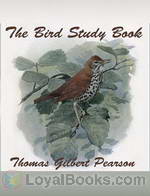 The Bird Study Book
The Bird Study Book
Do you enjoy birdwatching? Would you like to learn a little more about the early conservations efforts to protect wild birds? In the Preface to The Bird Study Book, Pearson tells us “This book was written for the consideration of that ever-increasing class of Americans who are interested in acquiring a greater familiarity with the habits and activities of wild birds. Attention is also given to the relation of birds to mankind and the effect of civilisation on the bird-life of the country. ” An avid ornithologist, T... | |
By: Thomas Mann (1875-1955) | |
|---|---|
 Bashan And I
Bashan And I
Simple and unpretentious as a statement by Francis d’Assisi, yet full of a gentle modern sophistication and humour, this little work will bring delight and refreshment to all who seek flight from the heavy-laden hour. It is, moreover, one of the most subtle and penetrating studies of the psychology of the dog that has ever been written—tender yet unsentimental, realistic and full of the detail of masterly observation and description, yet in its final form and precipitation a work of exquisite literary art. - Summary from the Foreword by Herman George Scheffauer | |
By: Thomas R. Malthus (1766-1834) | |
|---|---|
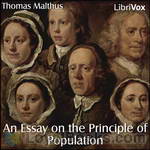 An Essay on the Principle of Population
An Essay on the Principle of Population
The power of population is indefinitely greater than the power in the earth to produce subsistence for man. Population, when unchecked, increases in a geometrical ratio. Subsistence increases only in an arithmetical ratio. A slight acquaintance with numbers will show the immensity of the first power in comparison with the second (Malthus). | |
By: Thomas Southwood Smith (1788-1831) | |
|---|---|
 Use Of The Dead To The Living
Use Of The Dead To The Living
In 1827 Thomas Southwood-Smith published The Use of the Dead to the Living, a pamphlet which argued that the current system of burial in the United Kingdom was a wasteful use of bodies that could otherwise be used for dissection by the medical profession. "If, by any appropriation of the dead, I can promote the happiness of the living, then it is my duty to conquer the reluctance I may feel to such a disposition of the dead, however well-founded or strong that reluctance may be". Southwood-Smith's lobbying helped lead to the 1832 Anatomy Act, the legislation which allowed the state to seize unclaimed corpses from workhouses and sell them to surgical schools... | |
By: Thornton W. Burgess (1874-1965) | |
|---|---|
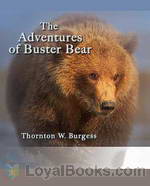 The Adventures of Buster Bear
The Adventures of Buster Bear
Known to generations of children and their parents as the Bedtime Story Man, Thornton Waldo Burgess wrote nearly two hundred much loved children's books. They were tales that recounted the doings of delightful characters who inhabited the Green Meadow and the Green Forest. Burgess, who was also an ardent conservationist besides being a writer and journalist shared his love of Nature and respect for all beings who share this earth with us. The Adventures of Buster Bear is a fun children's book that helps children understand that animals and the forest deserve respect and it is also a sincere call for responsible conservationism... | |
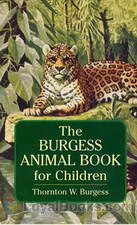 The Burgess Animal Book for Children
The Burgess Animal Book for Children
Peter Rabbit goes to school, with Mother Nature as his teacher. In this zoology book for children, Thornton W. Burgess describes the mammals of North America in the form of an entertaining story, including plenty of detail but omitting long scientific names. There is an emphasis on conservation. | |
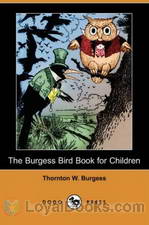 The Burgess Bird Book for Children
The Burgess Bird Book for Children
The Burgess Bird Book for Children is a zoology book written in the form of a story featuring Peter Rabbit. Peter learns from his friend Jenny Wren all about the birds of North America, and we meet many of them in the Old Orchard, the Green Meadow, and the Green Forest. | |
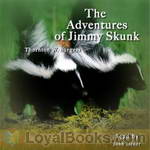 The Adventures of Jimmy Skunk
The Adventures of Jimmy Skunk
The Adventures of Jimmy Skunk is another in the long list children’s books by the conservationist, Thornton W. Burgess. In this book, Jimmy Skunk has encounters with Reddy Fox, Peter Rabbit, Unc’ Billy Possum and other acquaintances of his in the Green Meadows and Green Forest. Along the way, we learn some of the habits of Jimmy and his friends and we learn little lessons about life such as the importance of always keeping one’s temper, keeping promises and not playing practical jokes. We are also treated to a philosophical discussion by Jimmy Skunk on the advantages of defensive weaponry. | |
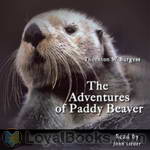 The Adventures of Paddy Beaver
The Adventures of Paddy Beaver
The Adventures of Paddy Beaver is another in the long list of children’s books by the conservationist, Thornton W. Burgess. In this book, the industrious and clever Paddy Beaver, a newcomer to the Green Forest, has encounters with Sammy Jay, Jerry Muskrat, Ol’ Man Coyote and other inhabitants of the Green Forest. Along the way, we learn how Paddy builds his dam and his house, and how he stores his food. We also learn little lessons about life, such as the importance of planning before doing, caring for Nature, trusting others, the benefits of working together and how wonderful it is to have a job one can sink one’s teeth into. | |
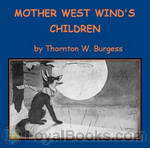 Mother West Wind's Children
Mother West Wind's Children
“You can’t fool old Mother Nature. No, Sir, you can’t fool old Mother Nature, and it’s of no use to try.” The animals of the Green Meadows and Green Forest have little adventures while Grandfather Frog tells stories to Mother West Wind’s children, the Merry Little Breezes. | |